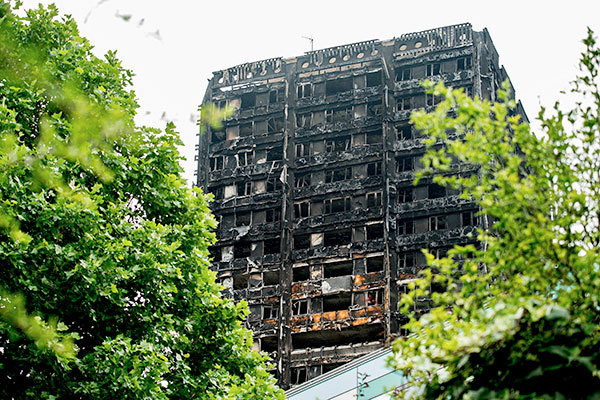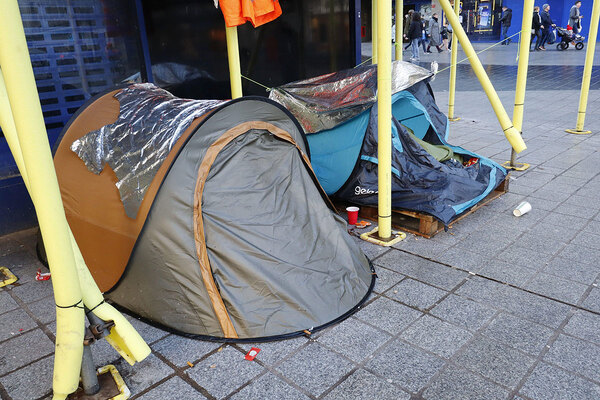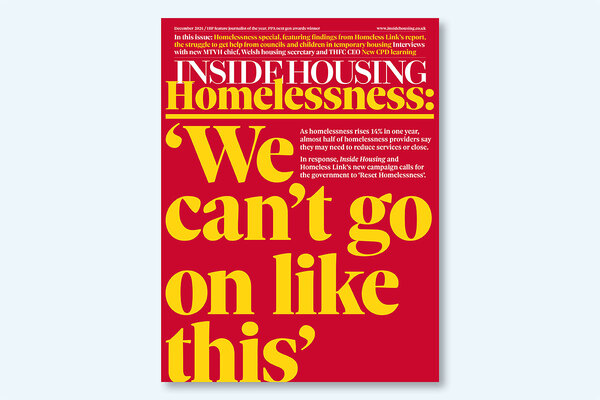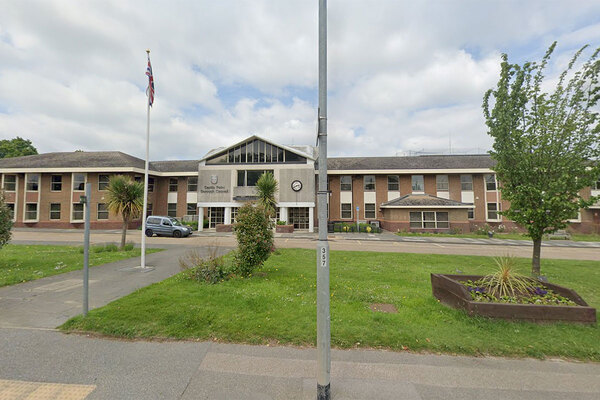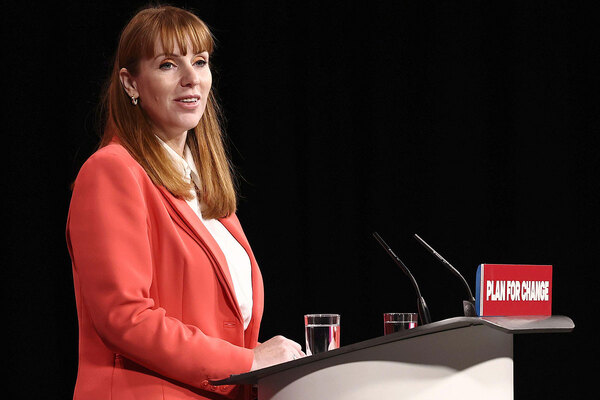You are viewing 1 of your 1 free articles
The art of insulation
Despite recent cuts to eco schemes, landlords still have challenging energy efficiency targets to meet. Corin Williams finds out how they’re approaching the task. Illustration by Michelle Thompson
The need to upgrade the UK’s draughty, cold homes with modern insulation is as great as ever, but landlords looking to retrofit properties have been dealt blow after blow.
Faced with a dramatic reduction in retrofit funding, social housing providers are having to develop their own funding models to tackle fuel poverty among tenants, and meet ever-tougher energy efficiency standards. Associations and councils are now in urgent discussions over how to kick-start their retrofit plans.
Questions asked
On top of all of this, the Grenfell tragedy has raised serious questions over the fire risk of retrofitted insulation, and this has made a number of social landlords very nervous.
There is a glimmer of hope in the shape of the government’s new Clean Growth Strategy, which has set out the direction towards more efficient homes. But with details still uncertain, how can social landlords put themselves in the vanguard of the energy efficiency drive?
Last month – before the Clean Growth Strategy was published – Inside Housing attended a conference in Birmingham which was aimed at sustainability heads of social landlords to find out if there is a way forward. Organised by the consultancy Sustainable Homes, optimism at the low-key event was as scarce as new energy efficiency funding. Discussions of mould and mapping homes took the place of what, a few years ago, could have been a chance to map out ambitious plans to retrofit on a grand scale.
CLICK HERE FOR MORE ON OUR FIRE SAFETY CAMPAIGN
In a private meeting, housing associations discussed how the Grenfell fall-out might hit their energy efficiency plans. Bevan Jones, managing director at Sustainable Homes, said the sector has been hit by a “crisis of trust” (see box: After Grenfell).
This is only the latest setback, however. To understand the current mood, we need to look further back. The years between 2010 and 2014 were a boom time for cavity and solid wall insulation retrofits, thanks to strong government policies and subsidies. The landscape today is radically different, following the end of initiatives such as the Green Deal, Community Energy Saving Programme (CESP) and Carbon Emission Reduction Target (CERT).
One million homes
Ambitions were downgraded in 2015 when the government issued a relatively modest pledge to insulate a million homes within five years. By comparison, 600,000 cavity wall insulations were completed in 2012 alone. Worse still, insulation installations are currently falling short of targets (see box).
“It’s a massive challenge, but the starting point is having that data.”
The reasons seem obvious: in 2015, the major retrofit funding mechanism, the Energy Company Obligation (ECO), was drastically cut back. Last week’s Clean Growth Strategy may have extended ECO to 2028, but only at the current, reduced levels.
The strategy also outlines £3.6bn of investment through ECO to upgrade energy efficiency in “around a million homes”, with an aim to see all fuel-poor homes achieving at least Energy Performance Certificate (EPC) Band C by 2030 – on a scale where A is the most efficient home.
The government says it will consult with providers to see how “similar standards” can be attained in the sector. But the impact of these announcements, and how they fit in with previous targets, is not yet clear.
What we do know is not enough homes are being insulated. In 2015, the proportion of households in fuel poverty in England was estimated at 11%, around 2.5 million households. This is an increase of 0.4% over the previous year. The consensus within the sector is that this will not do.
So what kind of strategies are associations employing to implement retrofits in the current policy hinterland? A number of common issues arise across the sector – including surveying stock, smart metering and figuring out the whole-life costs of energy efficiency installations.
Rebecca Hazlewood, corporate social responsibility manager at Flagship Homes, says her 22,000-home association made good use of CESP and CERT, but that it now has an “opportunistic” approach.
“At the point when the property is void, then our EPC surveyors have a look,” she says. “Otherwise, it’s done on customer demand.”
Flagship sees energy efficiency as part of wider social deprivation issues, and has mapped fuel poverty in its area, including which homes do not have wall insulation. It wants to get all its stock up to EPC C by 2030, and is focusing on the poor-performing homes first. It has also held talks with Energiesprong, a Dutch firm that funds insulation, solar PV panels and other energy efficiency measures through savings made from households’ lower energy bills.
“We are looking into different business models. It’s a massive challenge, but the starting point is having that data. Now we can start to schedule investment to see how we can reach our targets. As well as Energiesprong, with things like the Warm Homes funding being released, we’ve put in a bid because it’s a good opportunity to get some income.”
Many associations are pressing ahead with energy efficiency installations without any promises from government. L&Q has a voluntary target to bring all EPC E, F and G rated properties up to a D by 2020, funded through its maintenance budget. The association says its large-scale cavity wall and loft insulation programme was “heavily reliant” on ECO, CERT and CESP until 2014. But there are still around 10,000 properties in need of solid wall insulation.
The recent spate of mergers has led to extra complications. Steve Madell, director of asset services at Optivo, which was formed by a merger of Amicus Horizon and Viridian earlier this year, says more than 9,200 of the association’s 44,000 homes do not have solid wall or cavity insulation.
“We are delivering retrofit through our own resources and external funding.”
“We’re analysing the stock data and developing an energy and environmental strategy to set a minimum SAP [Standard Assessment Procedure] target,” he explains.
“Currently we are delivering retrofit works through a combination of our own resources and external funding. For instance, we have EU funding for retrofit works in Sussex. We recognise we need to be innovative about how we fund works.” Optivo is also taking part in an Energiesprong pilot.
Neil Brosnan, director of asset management at 4,700-home Octavia Housing, says gathering data on the energy profile of individual homes is essential. He used Switchee, a company that installs ‘smart’ thermostats in social housing, to prove the financial benefit of insulation and other energy efficiency measures.
“I’d love to get more grant funding, but I do have a board that is willing to fund. We’ve got a target to get all our properties up to EPC C by 2023. Half our stock is Victorian solid walls and fails that standard,” he says.
“The difference between energy bills of a new build home and a Victorian property could be more than £1,000 a year. Why have we not been able to extract that difference, to borrow in order to fund the delivery to get the lower-rated home up to an equivalent standard? It’s a hard thing to do, but we’ve seen it done.”
As associations grapple with existing targets, the goalposts have moved again. The Committee on Climate Change (CCC), set up in 2008 to steer through the UK’s legal obligation to reduce carbon emissions by 80% of 1990 levels by 2050, is calling on landlords to make plans now for 15 years’ time – and go “above and beyond” fuel poverty targets and SAP standards. The sector’s average SAP rating is 67, higher than for private homes. But to meet climate change commitments, UK housing needs to achieve 86. Carbon budgets for buildings demand a 20% cut by 2030 and “near complete decarbonisation” by 2050. Progress has been uneven, to say the least, and 2016 saw a 2% rise in emissions from buildings.
There is hope, however. The Sustainable Homes conference heard from a number of organisations, including the CCC, Energiesprong and RBS, who said installing energy efficiency measures can pay for themselves. RBS estimates it is possible to get a financial return of between 40% and 50% through funding household energy efficiency measures.
Ellie Horwitch-Smith, director of social housing energy consultants Adecoe, put it pithily when she told delegates she wanted to see an end to the “boom and bust of insulation investment”. She added: “Associations are floundering after years of grant funding, and now don’t know where to invest and haven’t carried out whole-life costings.”
They may have been left to do it on their own, but landlords can’t afford to ignore energy efficiency.
After Grenfell
“We do know there has been an impact after Grenfell; it has rightly so put the focus on quality. Budgets have been diverted to fire safety, literally overnight,” says Bevan Jones, managing director of consultancy Sustainable Homes, which specialises in social landlords. “Then there has been uncertainty from government. How do associations deal with fuel poverty with all that?”
Mr Jones is keeping his cards close to his chest, but the organisation is holding a series of closed talks – the first included two London-based housing associations and one Northern, as well as an insulation company, architectural firm and technical experts. A second meeting will take place on 7 November, and other associations, local authorities, fire safety experts and the Department for Business, Innovation & Skills representatives are expected to attend.
“We’re trying to cover everything from the supply chain to the end user. We want to get a view from across the industry on how we can do external wall insulation and energy retrofits better,” says Mr Jones.
“There are the social questions around poverty and the way we treat social tenants. Equally, there are issues around how we get the technical aspects correct and how we regain trust across the industry – house builders, and the people who come in to fit and repair.”
Energy efficiency: targets and what has been delivered
- All practicable lofts insulated by 2022, or 545,000 per year – 64,000 installed in 2016
- All practicable cavity walls insulated by 2030, or 200,000 per year – 92,000 installed in 2016
- Two million solid walls insulated by 2030, or 90,000 per year – 31,000 installed in 2016
Source: Climate Change Committee 2017 report to parliament: Meeting Carbon Budgets




